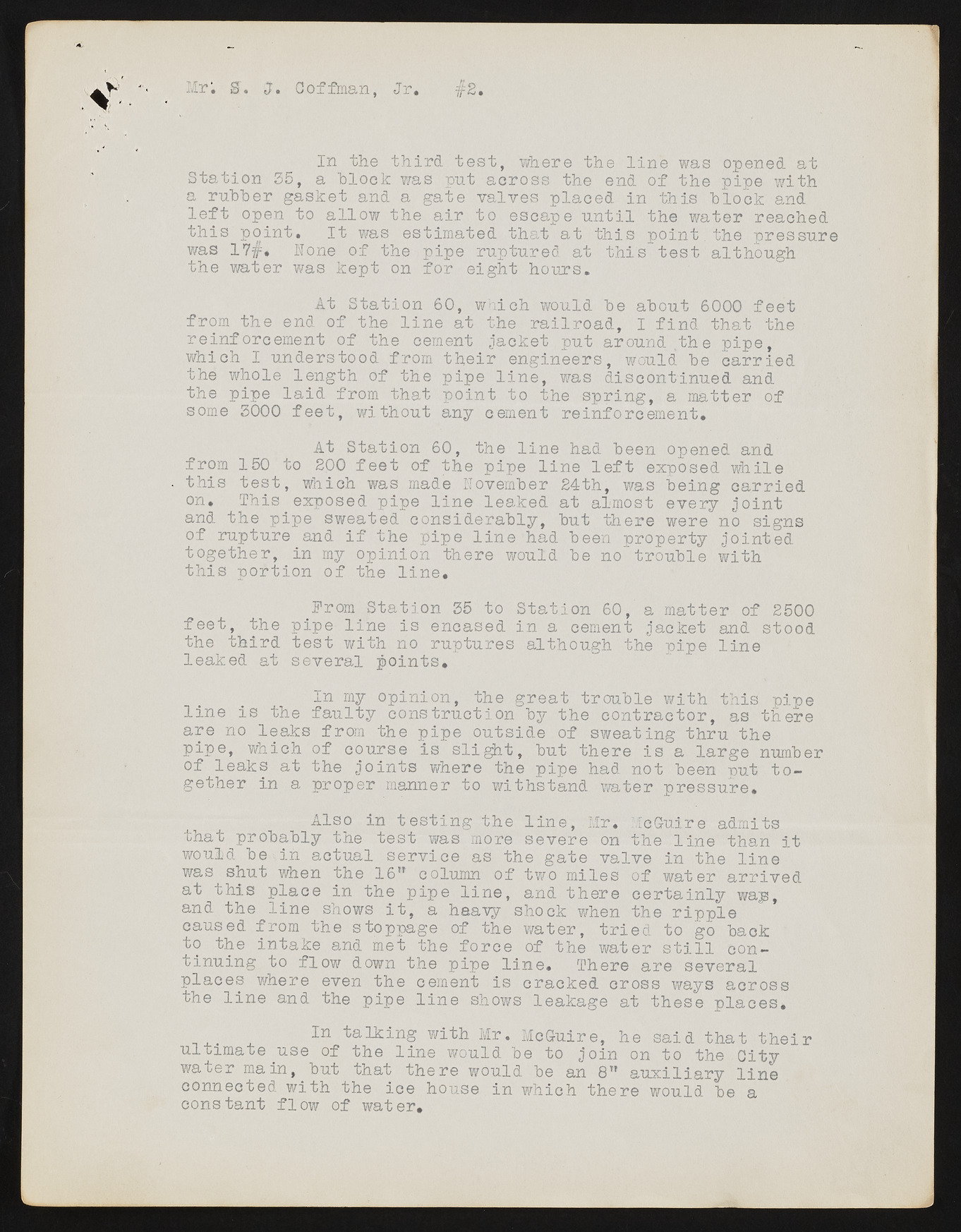Copyright & Fair-use Agreement
UNLV Special Collections provides copies of materials to facilitate private study, scholarship, or research. Material not in the public domain may be used according to fair use of copyrighted materials as defined by copyright law. Please cite us.
Please note that UNLV may not own the copyright to these materials and cannot provide permission to publish or distribute materials when UNLV is not the copyright holder. The user is solely responsible for determining the copyright status of materials and obtaining permission to use material from the copyright holder and for determining whether any permissions relating to any other rights are necessary for the intended use, and for obtaining all required permissions beyond that allowed by fair use.
Read more about our reproduction and use policy.
I agree.Information
Digital ID
Permalink
Details
Member of
More Info
Rights
Digital Provenance
Publisher
Transcription
Mr; S'. J. Goffman, Jr. #2. In the third test, where the line was opened at Station 35, a "block was put across the end of the pipe with a rubber gasket and a gate valves placed in this block and left open to allow the air to escape until the water reached this point. It was estimated that at this point.the pressure was 17#. None of the pipe ruptured at this test although the water was kept on for eight hours. At Station 60, which would be about 6000 feet from the end of the line at the railroad, I find that the reinforcement of the cement jacket put around .the pipe, which I understood from their engineers, would be carried the whole length of the pipe line, was discontinued and the pipe laid from that point to the spring, a matter of some 3000 feet, without any cement reinforcement. At Station 60, the line had been opened and from 150 to 200 feet of the pipe line left exposed while this test, which was made November 24th, was being carried on. This exposed pipe line leaked at almost every joint and the pipe sweated considerably, but there were no signs of rupture and if the pipe line had been -property jointed together, in my opinion there would be no*trouble with this portion of the line. JProm Station 35 to Station 60, a matter of 2500 feet, the pipe line is encased in a cement jacket and stood the third test with no ruptures although the pipe line leaked at several points. In my opinion, the great trouble with this pipe line is the faulty construction by the contractor, as there are no leaks from the pipe outside of sweating thru the pipe, which of course is sli^it, but there is a large number of leaks at the joints where the pipe had not been put together in a proper manner to withstand water pressure. Also in testing the line, Mr. McGuire admits that probably the test was more severe on the line than it would be in actual service as the gate valve in the line was shut when the 16” column of two miles of water arrived at this place in the pipe line, and there certainly way, and the line shows it, a heavy shock when the ripple caused from the stoppage of the water, tried to go back to the intake and met the force of the water still continuing to flow down the pipe line. There are several places where even the cement is cracked cross ways across the line and the pipe line shows leakage at these places. talking with Mr. McGuire, he said that their ultimate use of the line would be to join on to the City water main, but that there would be an 8” auxiliary line connected with the ice house in which there would be a constant flow of water.

